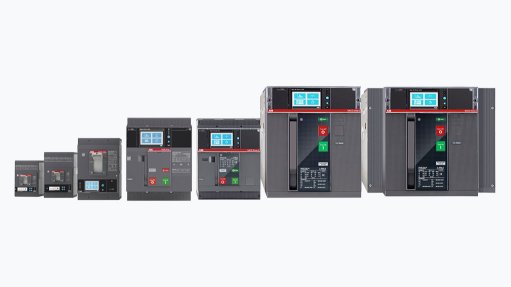Effective drug and alcohol testing boosts project management


SAFETY CONCERN One entrance to a mine decreases the effectives of alcohol and drug tests owing to too many people passing through at a time
Photo by Bloomberg
Owing to the Mine Health and Safety Act of 1996, the process of employees entering mines in South Africa is often slow because breathalyser and random drug tests need to be completed, subsequently hampering a mine’s pro- ductivity, explains drug and alcohol testing equipment and accessories company Alco-Safe.
To curb the delays, project managers in charge of mine development should add more than one entrance to their designs and equip these with turnstiles to enable security guards to test mineworkers entering and exiting the mine at multiple points. Alco-Safe director Rhys Evans tells Mining Weekly that security guards can conduct random or compul- sory tests at entrance points based on the observed behaviour of personnel.
“Having only one queue increases the difficulty of observing people, as too many people are moving through to accurately track them. Multiple queues will also ease the flow of mineworkers into the mine when security guards need to conduct random testing. Further, a turnstile connected to a breathalyser ensures that the access system will not allow those who test positive for alcohol to enter.”
Evans points out that when access systems and testing systems are not connected, individuals who test positive can sometimes still enter a mine, owing to a delay in response that the disconnect causes. Security guards conducting the testing might also be subjected to bribery or they can be coerced into allowing mineworkers to enter the premises.
Alco-Safe can provide systems where access to a mine site depends on access keys or biometric systems that are connected to breathalyser systems.
The number of safety systems used at local mines has increased, with larger mining companies spending several millions of rands to ensure that mines are safe. However, when employees are intoxicated, whether it be because of alcohol or drugs, mine safety systems can be made ineffective, Evans highlights.
“Even if a mining machine or vehicle has all the necessary safety systems in place, if the operator is too intoxicated to make rational decisions, accidents will occur.” Evans adds that part of the common procedure for investigating an accident at mines is to have the operator or employees that were involved in the incident tested for alcohol or substance abuse. This connected system makes it easier for mines to not only reduce accidents but also monitor how well safety systems are working.
He further points out that there are more than 5 000 businesses, including mines, that use breathalyser and drug testing systems provided by Alco-Safe in the local mining industry. Additionally, the company has provided systems for every sector of the mining industry, with the coal mining sector representing the majority of Alco-Safe’s client base.
Drug Abuse
Alcohol abuse is not the only substance abuse that is prevalent in the mining industry, with drug abuse, such as marijuana and methamphetamines, having caused several accidents and deaths while mineworkers were on duty.
The testing of drug abuse is not as simple as using a breathalyser to test for alcohol. Evans says, when a mineworker is tested for drug abuse, a urine or saliva sample is required, with the retrieval of urine samples often delayed by the person being tested claiming to be unable to urinate.
“They claim this . . . to delay the test. We usually see this when an employee knows that the test will show a positive result. Therefore, Alco-Safe started to supply the Drug Detection System 2 saliva-based testing kit.”
The test can deliver results within four to seven minutes and can also be used to test for multiple drugs at once such as marijuana, cocaine or methamphetamines.
Despite rumours in the mining industry that the use of certain drugs can increase concentration or performance, they cause only short periods of elation, called highs, while the so-called lows can result in employees having trouble responding rationally and logically to situations.
Article Enquiry
Email Article
Save Article
Feedback
To advertise email advertising@creamermedia.co.za or click here
Announcements
What's On
Subscribe to improve your user experience...
Option 1 (equivalent of R125 a month):
Receive a weekly copy of Creamer Media's Engineering News & Mining Weekly magazine
(print copy for those in South Africa and e-magazine for those outside of South Africa)
Receive daily email newsletters
Access to full search results
Access archive of magazine back copies
Access to Projects in Progress
Access to ONE Research Report of your choice in PDF format
Option 2 (equivalent of R375 a month):
All benefits from Option 1
PLUS
Access to Creamer Media's Research Channel Africa for ALL Research Reports, in PDF format, on various industrial and mining sectors
including Electricity; Water; Energy Transition; Hydrogen; Roads, Rail and Ports; Coal; Gold; Platinum; Battery Metals; etc.
Already a subscriber?
Forgotten your password?
Receive weekly copy of Creamer Media's Engineering News & Mining Weekly magazine (print copy for those in South Africa and e-magazine for those outside of South Africa)
➕
Recieve daily email newsletters
➕
Access to full search results
➕
Access archive of magazine back copies
➕
Access to Projects in Progress
➕
Access to ONE Research Report of your choice in PDF format
RESEARCH CHANNEL AFRICA
R4500 (equivalent of R375 a month)
SUBSCRIBEAll benefits from Option 1
➕
Access to Creamer Media's Research Channel Africa for ALL Research Reports on various industrial and mining sectors, in PDF format, including on:
Electricity
➕
Water
➕
Energy Transition
➕
Hydrogen
➕
Roads, Rail and Ports
➕
Coal
➕
Gold
➕
Platinum
➕
Battery Metals
➕
etc.
Receive all benefits from Option 1 or Option 2 delivered to numerous people at your company
➕
Multiple User names and Passwords for simultaneous log-ins
➕
Intranet integration access to all in your organisation


















